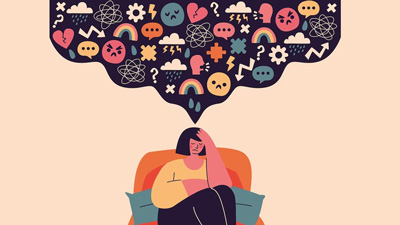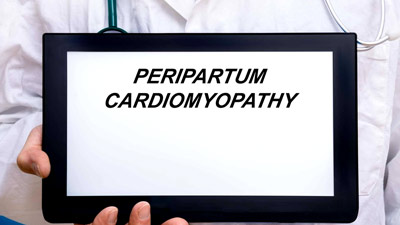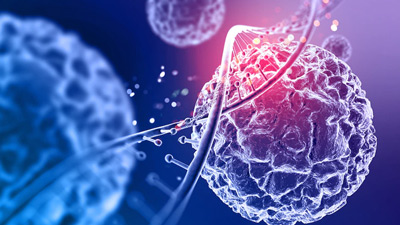Communicable Diseases
Do you know what a communicable disease is? It is when a disease spreads from one person to another through different mediums. Communicable diseases can be caused either by bacteria or viruses or fungi. An infected person carrying the pathogen can infect the other person by coming in direct physical contact or through the exchange or food or saliva. Communicable diseases are popularly called transmissible or infectious diseases as the rate of infection is and transmission is higher in these. You will find articles related to different communicable diseases in this section.
How are communicable diseases caused?
A healthy person can get infected after contracting a pathogen like bacteria, virus or fungi. There is a wide range of communicable diseases that can be spread through these pathogens. While the primary cause of every communicable disease remains a pathogen, there are different ways in which a communicable disease is transmitted from one person to another. These are:
- Coming in direct physical contact with a person who is carrying the infection or pathogen
- Consumption of contaminated fluids or foods
- Contact with infected saliva, mucus or blood
- Inhalation of infected droplets from the infected person’s sneeze or cough
- Getting bitten by an insect or an animal carrying the pathogen
Once the pathogen gets into the body of a healthy person, it starts to replicate and multiply. When the numbers increase, the person starts to show symptoms of a particular communicable disease. While some symptoms are due to the immune response of the body to the infection, severe symptoms may indicate the damage that the pathogen is causing to the body. In most cases, the symptoms are mild and subside after a few days. If the person is ailing with any condition, then the symptoms may become severe and potentially life-threatening.
How Many Types of Communicable Diseases Are There?
Communicable diseases are categorised based on the pathogens they are caused by. The four main types of pathogens that cause communicable diseases are- viruses, bacteria, protists and fungi. Let us talk about them in detail along with the diseases they cause and their symptoms.
Viruses
Viruses are small pathogens that cause the most common communicable diseases. They have a genetic structure that unlike other pathogens with complex cell structure. In simpler terms, viruses don’t replicate easily as they don’t have any structure of their own. To multiply, they need to enter the living cells inside the human body and then reproduce. There are different viruses that cause different illnesses.
Rhinoviruses (Causes Common Cold)
If you get a common cold as the season change, it is because rhinovirus has entered your body. This is a cluster of viruses that trigger the common cold. The symptoms of which are:
- Sore throat
- Runny and stuffy nose
- Headache
A person can easily get common cold if he/she comes in contact with an infected person who is ailing from cold. Upon coming close to the person, the infected droplets may enter your body. Besides, if you touch anything that an infected person has touched before, you may also get infected.
Influenza virus
This virus causes infections of the respiratory system. It is nearly similar to rhinovirus as it can easily sneak into the body of a healthy person and target the respiratory system. The signs and symptoms are:
- Cough
- Sore throat
- Runny or stuffy nose
- Fever and chills
- Headaches
- Fatigue
- Body ache
HIV
This is a popular virus that badly affects the immune system of the person and puts him at risk of many other infections. When a person comes in contact with infected fluid or blood of an infected person, they may develop HIV. This can get serious and the symptoms become mild to severe in weeks as the infection grows. The common symptoms of HIV are:
- Chills
- Fever
- Fatigue
- Rashes
- Sore throat
- Swollen lymph nodes
- Mouth sores
- Muscle aches
- Night sweats
Getting an HIV test can only diagnose the presence of this virus in the body. Sexually-active people must get this test done annually to reduce the risk. Sadly, there is no cure for HIV. It can only be kept under control through medications. If left untreated, HIV can develop into AIDS.
Bacteria
Bacteria are single-celled organisms that are microscopic in nature. Bacteria are everywhere in the environment and in fact, they do exist inside the human body as well. There are both harmful and harmless bacteria. Good bacteria help in securing health whereas bad bacteria can cause infection. The two types of bacteria are Escherichia coli(E. Coli) and Salmonella. These bacteria mostly target the digestive system and cause digestive issues. These bacteria are present in contaminated foods such as unwashed fruits, vegetables, uncooked meats, spoilt foods, etc. You would suffer from fever, headache, diarrhoea and abdominal cramps.
Tuberculosis
Tuberculosis or TB is a bacterial infection that affects your lungs. You might have seen TB patients coughing hard and unable to catch a breath. The common symptoms of TB are:
- Coughing for more than 3-4 weeks
- Unintentional weight loss
- Fever
- Night sweats
- Chills
- Loss of appetite
There are aerosols of infected bacteria in the air. A person can catch TB upon coming in contact with these infected aerosols. Tuberculosis is contagious but it isn’t highly communicable.
Fungi
Fungi are commonly found in yeasts, mushrooms and molds. There are millions of fungi present in the environment but only a few of them are harmful and can cause severe diseases. Most fungi affect mucus membranes and the skin but it can occur anywhere on the body.
Ringworm
The most common communicable fungal infection is ringworm that targets the skin. You’d see an itchy and scaly ring-shaped rash. If someone comes in direct contact with a person who has ringworm, they can get this too. Sharing towels, personal items and bedding can spread ringworm.
Protists
These are single-celled microorganisms and most of them are parasitic. They live on or inside a living organism and rely on them to survive. Parasitic protists can cause an array of illnesses. Malaria, the popular mosquito-borne disease is also caused by protist Plasmodium. The symptoms of malaria are:
- Headaches
- Diarrhoea
- Fever and chills
- Muscle pains
- Vomiting
How are communicable diseases treated?
Viral infections
These are mostly treated through vaccines. There are specific injections for all viral diseases. These have inactive forms of the virus that helps in building immunity against the virus.
Bacterial infections
A course of antibiotics is given to prevent and cure bacterial infections. These drugs potentially kill the bacteria thereby stopping their replication process.
Fungal infections
Fungal infections can be treated through over-the-counter medicines. These can be oral as well as topical. The doctor would prescribe you the best medicine according to the infection.
Related Articles
-
Common Infections During Monsoon: Here’s How You Can Protect Your Child From Them
The monsoon season may provide reprieve from the blazing heat, but it also brings with it a variety of illnesses that can harm children.
-
Communicable Diseases: Types, Effects And Symptoms
Communicable diseases can be of various types, here is a list of diseases and its symptoms that cause infection.
-
Diseases Caused By Protozoan Infection And Their Treatment
Protozoan infections are caused by different types of parasites. Here are the diseases that are caused because of this infection.
-
Why does Platelet Count decrease In Dengue Fever? Know The Reasons
We all know that platelet count decreases in dengue fever but why? This article tells the reason for lowering platelet count during dengue.
-
Tips to Stop the Spread of Flu in Your Home
Flu is contagious and you might get sick before you know it. You can practice a few rules at home that will keep you healthy and avoid the flu from spreading.
-
Animal Bite can cause Rabies: Know symptoms and treatment
Rabies treatment of people: Clean the wound properly with soap and water after an animal bite. Consult your physician for advice regarding rabies vaccine.
-
Copycat disease is on a rise in India
Contrary to what you may think it is, copycat disease is not the perpetual habit of wanting to copy people. It is a bacterial infection called melioidosis, which is hard to detect because it copies other diseases.
-
Prevention is much better than cure in Diarrhea
During monsoon, it is particularly important to guard against the disease. Diarrohea, as we all know, is a condition in which we experience frequent watery stools (loose stools).
-
Health Minister J P Nadda announces measures to tackle non communicable diseases with yoga
According to World Health Organization, every year, roughly 5.8 million Indians die in influence of non communicable diseases like heart and lung diseases, stroke, cancer, and diabetes.
-
Can Dengue Transfer from Person to Person?
Dengue is primarily transmitted by the bite of an infected mosquito called Aedes Aegypti that is more active during the day. Dengue fever can only spread through the bite of an infected mosquito not from human to human.















